Fiesta! Spain’s Biggest Festivals: Semana Santa to Carnaval
Explore Spain's vibrant culture through its festivals. Discover the best fiestas to include in your Spain itinerary with Fernwayer's comprehensive guide to Spanish festivals.
Spanish people know how to throw a festival, whether it is for nationally marked religious celebrations like Holy Week or a chestnut festival in a tiny mountain village to herald the autumn harvest.
These colorful cultural events, often based on centuries-old traditions, create unforgettable memories for travelers who have the chance to participate. Such festivals bring together local communities and attract curious visitors from all over the country whose attendance helps the local economy.
The big one: Semana Santa
One of the most visually arresting national events is Semana Santa (Holy Week), taking place between late March and early April. The sight of hooded, robed figures parading solemnly in long snaking lines as mournful music is played by a marching band and faithful Christians carry images of the Virgin Mary or Jesus Christ positioned on elaborate silver platforms decked with fresh flowers, can be seen all around the country in spring.
Small towns may have just one or two pasos (floats) during the week, while larger cities like Seville and Málaga will have up to nine processions each day. As thousands of people reach these cities to join the celebrations, it’s worth snagging a hotel room with a balcony on a main route to watch the parade in comfort. Other towns famous for their Holy Week processions are Valladolid, Zamora and León.
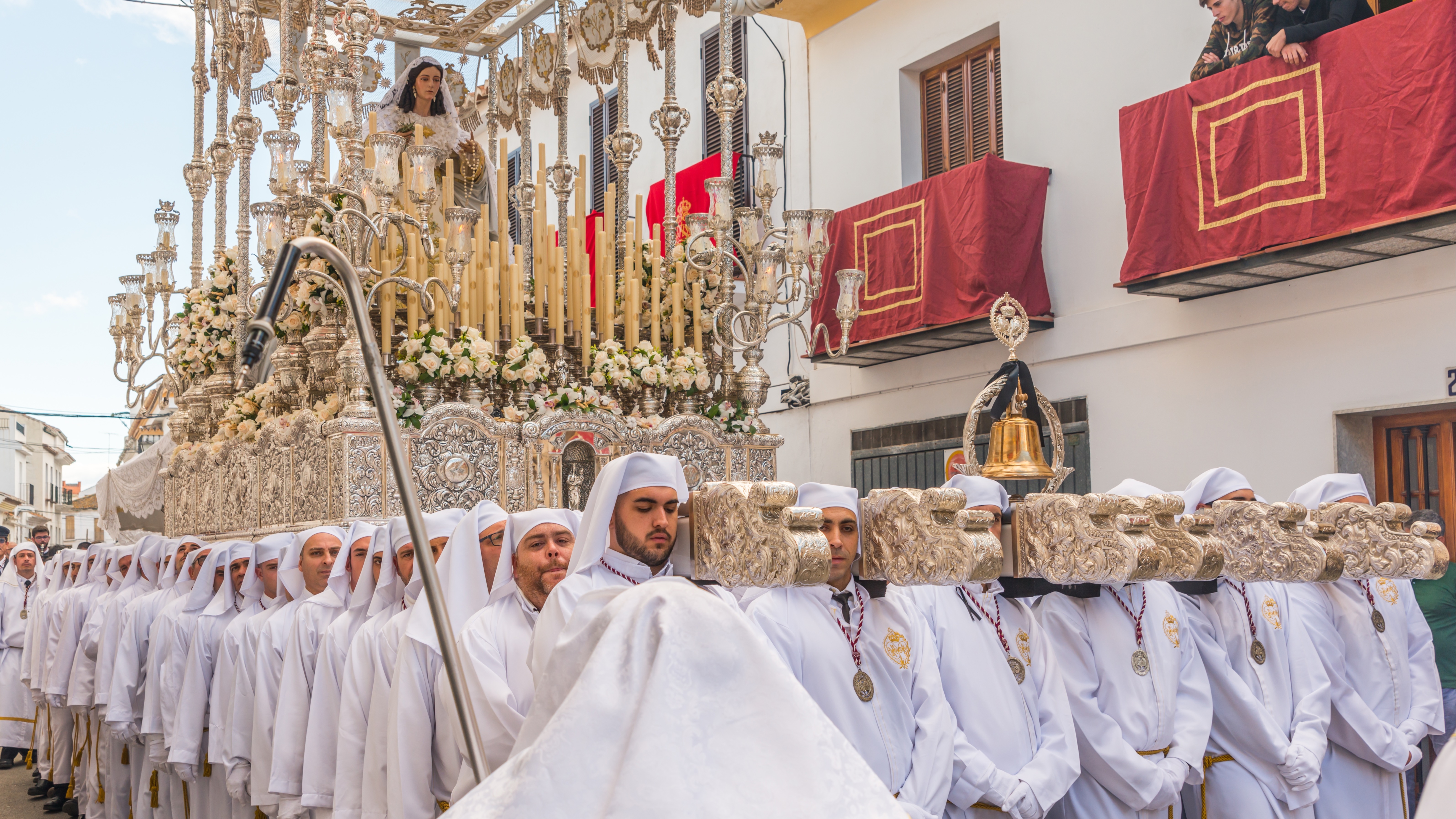
Shutterstock
With its mighty Semana Santa program – around 70 processions in total – and a reported million visitors arriving to witness the spectacle, Seville’s Holy Week is also the showpiece for its Arte Sacro, or religious art. This world of ancient artisan skills embraces the wooden images of Christ and the Virgin, the richly embroidered mantles that dress them and the canopies that protect them, and the pasos themselves, covered in intricately embossed silverwork.
As Seville’s most renowned embroiderer, Paquili, whose clients include the hugely popular Macarena brotherhood, said in an interview with Canal Sur Radio,
“It's a tremendous responsibility, because you know that the pieces that come out of your workshop have a specific purpose: to embellish or decorate an image that is placed for worship or that is going to go out in a procession, and that is going to be the focus of the gaze of so many people. You are going to serve as a connection, so that they can communicate better with their feelings and emotions.”
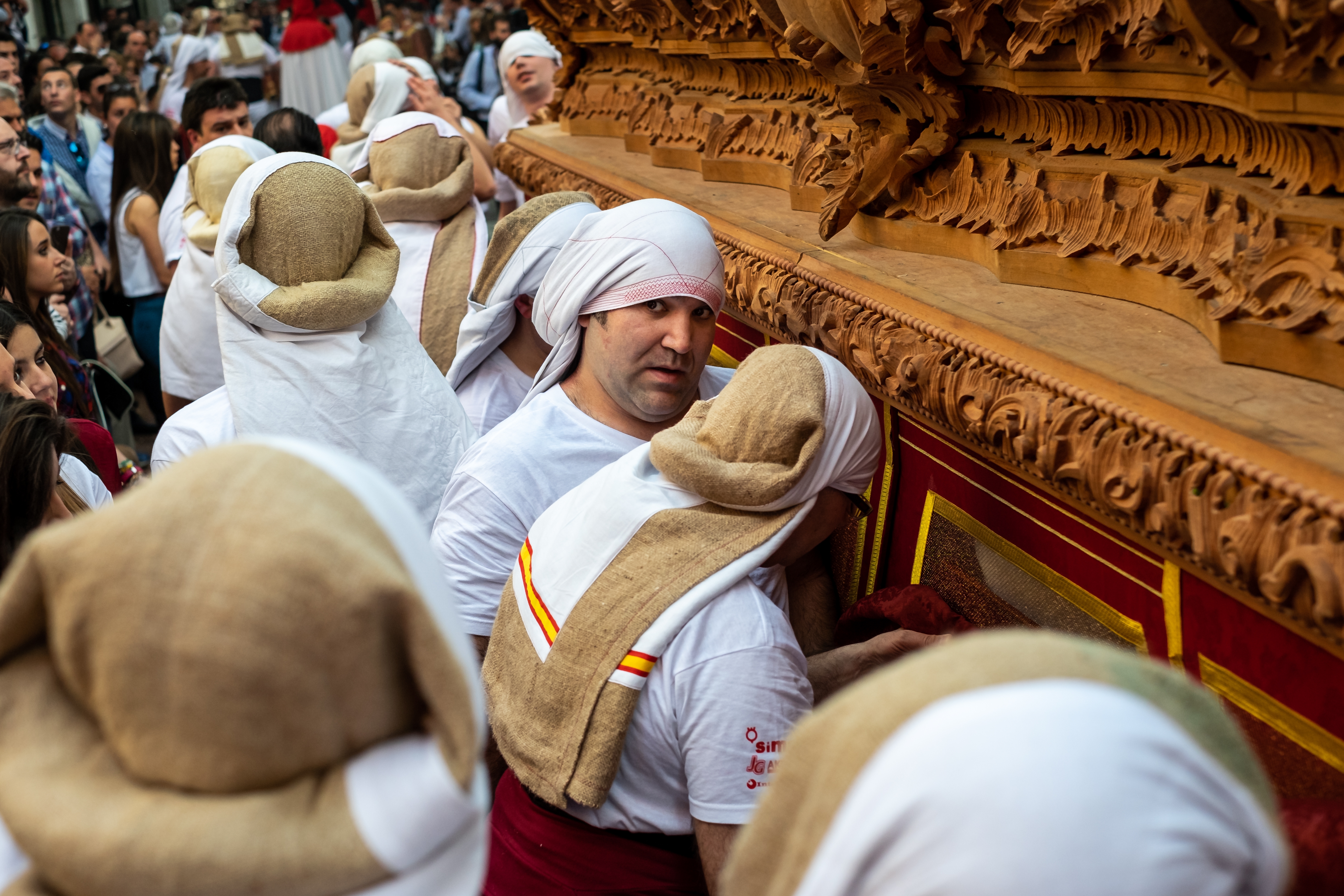
Shutterstock
Carrying the Virgin or Jesus image is considered a great honor within each hermandad (brotherhood), which organizes the procession and also runs neighborhood social projects. The costaleros’ task is also a major physical accomplishment – each paso can weigh as much as 2,000 pounds.
This spectacle, full of pathos and theater, is also a multi-sensory experience – smell the incense wafting in clouds from the censer swung by the altar boy, and the heady scent of camellias and lilies on the paso; as well as the bands, from balconies along the route, people sing searingly intense saetas (flamenco-based songs, usually addressed to the Virgin).
Even when you’ve been watching the processions year after year, the sights, sounds and smells never fail to stir the emotions, whatever your own personal religious beliefs.
Gifts from the Magi: Fiesta de los Reyes
On January 5, the Three Kings, or Magi, who according to the Bible brought gifts to baby Jesus, deliver presents to children around Spain to celebrate the Fiesta de los Reyes.

Barcelona turns into an enchanting stage, embracing the cabalgata of the Fiesta de los Reyes. The metropolis springs to life to welcome the arrival of the Three Kings: Melchior, Gaspar, and Baltasar. [Photo: Shutterstock]

The Reyes arrive in style in a cabalgata (parade), each riding on his own extravagantly decorated float, with attendants who throw candies and small gifts into the crowds. Children love to take part in these processions, and groups of friends decorate the float together in smaller towns, thereby fostering community bonds.
Carnaval is for dressing up (and burying sardines)
Before Lent, during which the faithful traditionally abstained from eating meat on Fridays, Carnaval sees people dress up in crazy costumes, often topically-themed. Musical groups perform songs and satirical skits, some of which enter an official competition; the most famous Carnavales are in Cádiz and Santa Cruz de Tenerife. The end of Carnaval is marked by the Burial of the Sardine (yes, seriously).

Amidst a flurry of mock mourning and high spirits, Madrid prepares for the annual Entierro de la Sardina (Burial of the Sardine), Carnaval’s closing ceremony consisting of a whimsical funeral procession for the fish, meant to invite a flourishing new season. [Photo: Shutterstock]

Valencia burns during Las Fallas
Talking of topical, Las Fallas in Valencia, taking place in mid-March, is a festival whose protagonists are giant ninots, or figures, with satirical themes from politics to celebrities, intricately created and painted by each neighborhood.
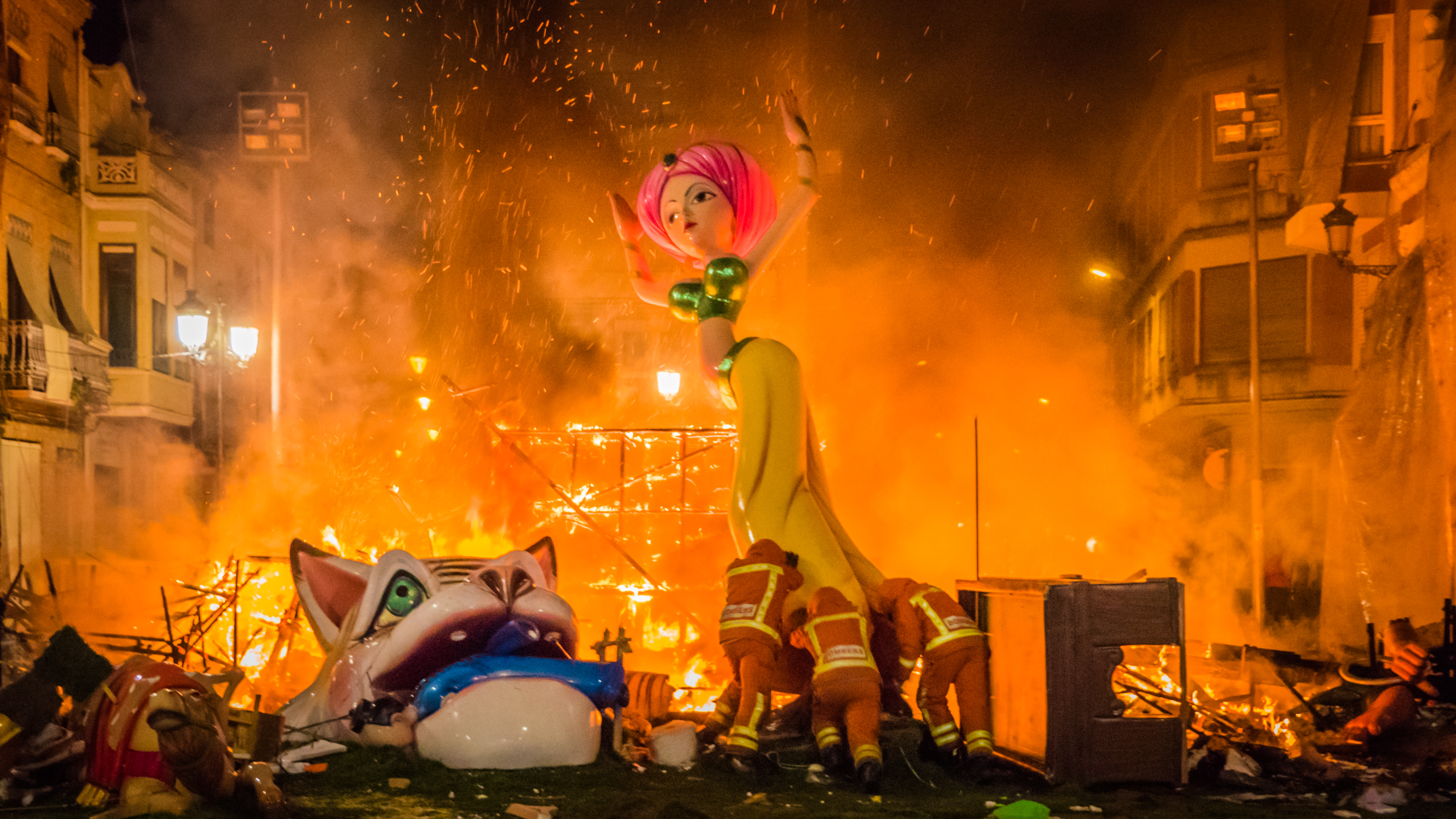
Each year, two ninots indultats are spared the flames and added to the city’s Fallas Museum, so you can find out about the festival no matter when you visit. Be aware that, from 1 to 19 March, firecrackers are set off daily at 2pm, and also fireworks at night: those of a nervous disposition might find this level of noise challenging.
Sevillanos welcome Feria de Abril with sumptuous feasts and colorful outfits
When you think of a fiesta in Spain, you probably imagine plates of delicious food, flowing wine, beautifully dressed people, and dancing in a stunning setting. The Feria de Abril in Seville, held in April, ticks all those boxes, and more – add horse-drawn carriages, men and women riding horses in traditional equestrian costume, and brightly-coloured paper lights to illuminate the streets.
———
For one week, a fairground on the edge of the city hosts a temporary town of more than 1,000 striped casetas (tents), each with a bar, tables and chairs, and dance floor. [Photos: Shutterstock]

1
Revelers in traditional Andalusian attire enjoy the festivities in front of the colorful casetas adorned with vibrant patterns and lanterns at Seville's April Fair.

2
Amidst the bright and bustling scene of the Seville April Fair, attendees in elaborate flamenco outfits gather around the casetas, celebrating the rich cultural heritage of Andalusia.

3
A group of fair-goers dressed in flamboyant flamenco dresses moves through the fairgrounds, showcasing a dynamic array of patterns and colors against the striped backdrop of a caseta at the Seville April Fair.
The tipple is rebujito (manzanilla sherry with 7UP), the chow is cheese, Iberian ham, fresh shrimp, egg tortilla, and fried green peppers, and the dress code is frilly and colorful, with a flower in your hair (shirt and trousers for men).
It’s a whirl of excitement, and a feast for the eyes; they say that sevillanos often meet their partners here, demonstrating its social as well as cultural significance.
Try dancing a sevillana (a local variation on flamenco) – you can even take classes and hire a “flamenca” dress – a fitted style which flatters every type of body shape; it is the only Spanish regional costume that changes fashion each year in terms of color, sleeve length, and fabric.
Stay Inspired. Explore the World.
Subscribe to the Wayer Journal and discover a world of inspiring stories and Fernwayer's newest, meticulously crafted private tours.
Countless towns and cities hold ferias, usually on their patron saint’s day – a small one might have 10 casetas, but with the same level of joy and excitement. At Málaga’s Feria de Agosto the action moves between two venues: the daytime feria takes place in the historic city center – look out for performances of verdiales dances, while at night the recinto (feria ground) on the outskirts springs into life. A Spanish town feria is definitely worth experiencing, whatever the scale.
Romerías follow ancient paths of devotion
Another event which features frocks and horses, but this time returning to the religious theme, is the romería, or pilgrimage. On the town’s saint’s day, townsfolk will carry an image of the Virgin Mary to a sanctuary or chapel in the countryside, and then enjoy a picnic with music and dancing; these events bring the community together in a day of joyous celebration.
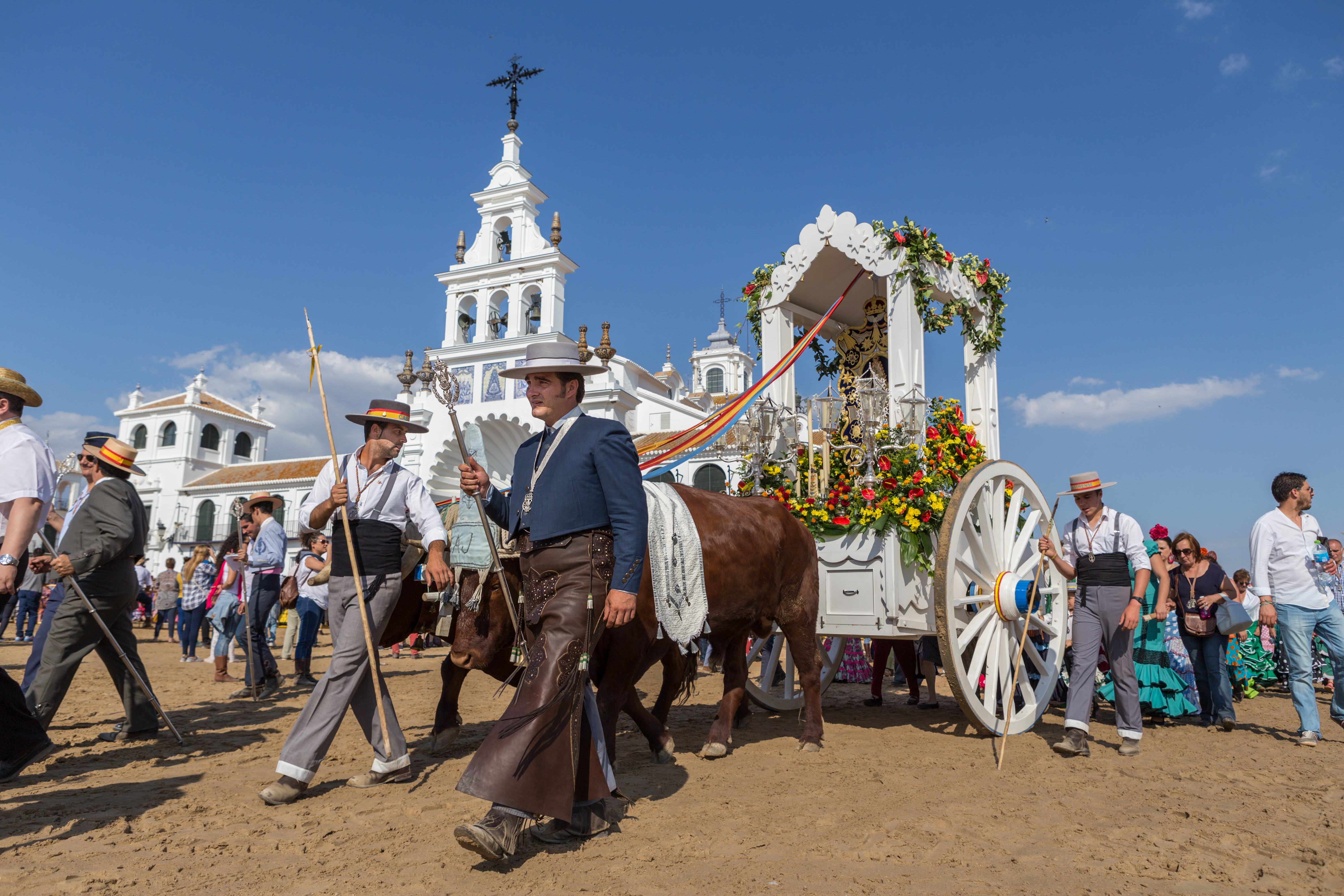
One of the most famous pilgrimages is El Rocío, held on Pentecost Monday, 7 weeks after Easter, in Huelva province, close to the Portuguese border. Around one million devotees descend from all over Spain in ox-drawn wagons, on horseback, and by SUV, to the sandy-floored wild-west town of El Rocío, to venerate “La Paloma Blanca”, the Virgen del Rocío, housed in her brilliant white sanctuary.
While this festival brings together communities from all over Spain, its environmental impact is high, as a number of hermandades pass through Doñana National Park on their way. The town is definitely worth a visit, especially in spring – spot the wild horses roaming free close to the church.

In Madrid, Plaza Mayor and other locations host San Isidro, the celebration of the capital’s patron saint, running for one week in mid-May features with art exhibitions and open-air concerts; chulapos and chulapas (men and women madrileños) wear castizo folk costume, and dance chotis (German polka) in the street, sustained by festive snacks, rosquillas del Santo (donuts). [Photo: Shutterstock]

A Big Week to celebrate Basque heritage in San Sebastian and Bilbao
Moving to the other geographical extreme of Spain, in the far north-east, Aste Nagusia (Big Week), takes place in mid-August in San Sebastian and Bilbao . A celebration of Basque heritage, these weeks feature free concerts, Basque rural sporting competitions (stone-lifting and word-chopping), matches of pelota, the regional ball game, dance shows, and firework displays. Look out for the pintxo-poete in gastro-heaven San Sebastian - well-priced pintxo-plus-drink deals.
Folk and flamenco take center stage during Spain’s traditional music festivals
Music plays a key role in Spain’s festivals: two worth mentioning are the Zambombas of Jerez de la Frontera, home of sherry, and the Granada Festival. Zambombas (the name comes from a drum-like musical instrument used as accompaniment) are parties featuring flamenco Christmas songs such as La Marimorena, where anyone can take part (don’t worry, you can just watch), bringing together the local community.

You’ll find Zambombas all over Jerez, where the zambomba originates, in the weeks leading up to 24 December; they’re considered an essential part of the city’s strong flamenco culture. [Photo: Shutterstock]

Jerez’s flamenco festival, Festival de Jerez, held between the end of February and the beginning of March, is one of the most prestigious celebrations of the guitar, singing and dance form.
On balmy summer nights, listening to a string quartet play in the Alhambra palace, or watching dancers perform in the Generalife gardens, make the Granada Festival (early June to mid-July) unmissable if you’re in Andalucia. Last year Bob Dylan played here.
The human towers of Gràcia
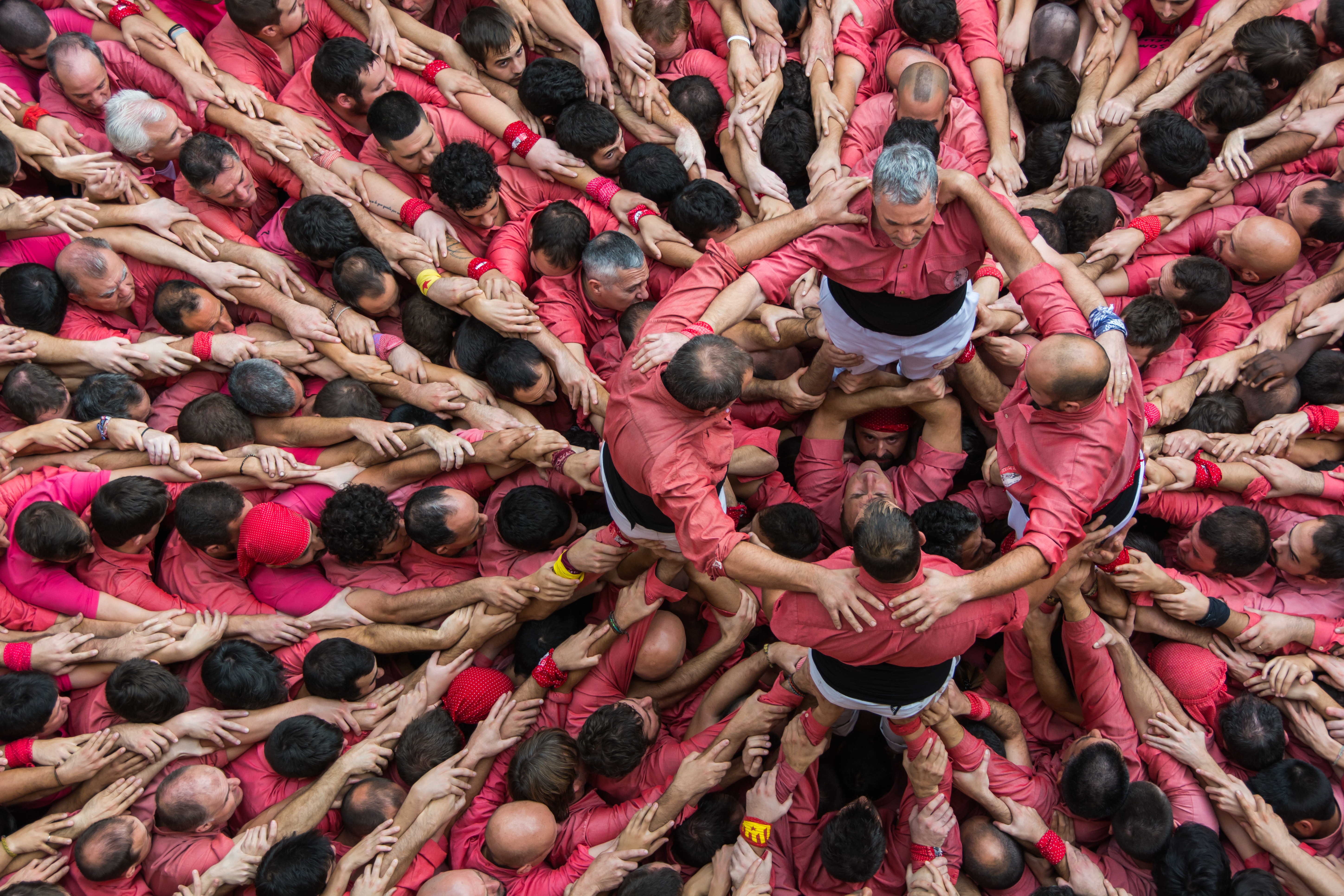
Shutterstock
The Festa Major de Gràcia street festival, in August, takes over the Catalonian city’s central, charming Gràcia neighborhood. You can see the castellers – gravity-defying human towers, as well as correfocs (fire runs – be aware of loud fireworks) and havaneres (traditional songs). Streets and plazas are decorated, and parade and concert goers are fed with plenty of butifarra (sausage).
Devilish El Colacho
Surely one of Spain’s quirkiest festivals is El Colacho in Castrillo de Murcia, held around Corpus Christi in early June. Men representing the devil, wearing red and yellow suits, jump over babies – el salto del Colacho – born the previous year. The idea is to guard them against illness and bad luck throughout their life; the colachos (devils) absorb misfortune from the babies, removing any sin.
Food festivals: the Tomatina and beyond
And of course, food festivals in Spain are an entire genre. La Tomatina in Buñol, Valencia, held on the last Wednesday of August, is a massive food fight involving flinging squashed, overripe tomatoes at each other. Note that you need to buy a ticket, as numbers are limited to 20,000. For those who don’t fancy the fruity frolics, there’s a virtual reality experience at the town’s Tomatina Museum.

On a smaller scale, mountain villages from Cataluña and Galicia to Andalucia hold castañadas (chestnut festivals) in November, to herald the season of these delicious roasted nuts – Spain is the second-largest producer of chestnuts. In September, wine-making areas hold Vendimias, wine harvest festivals. Treading the grapes is a fun activity, especially with children.
Whatever type of festivals you enjoy, from food and wine to music and dancing, or religious observance, you’re sure to find one to your taste somewhere on your travels around Spain. ||

